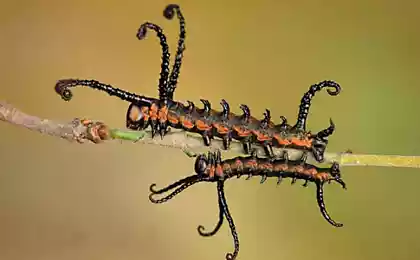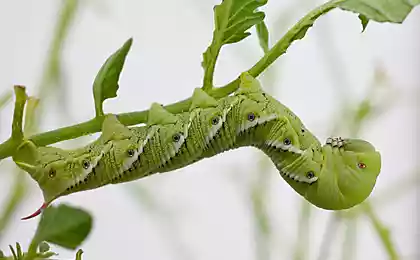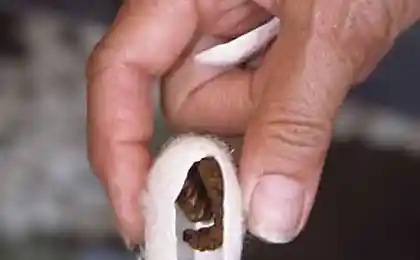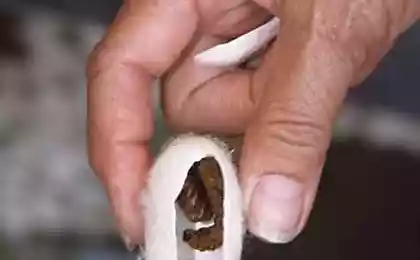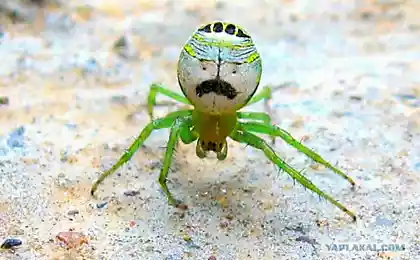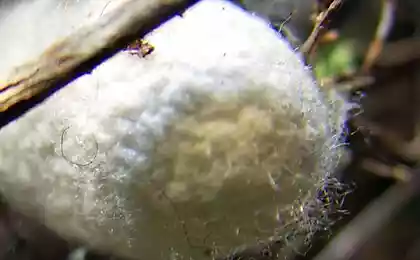850
Frightening caterpillars eat less, but grow faster nepuganyh
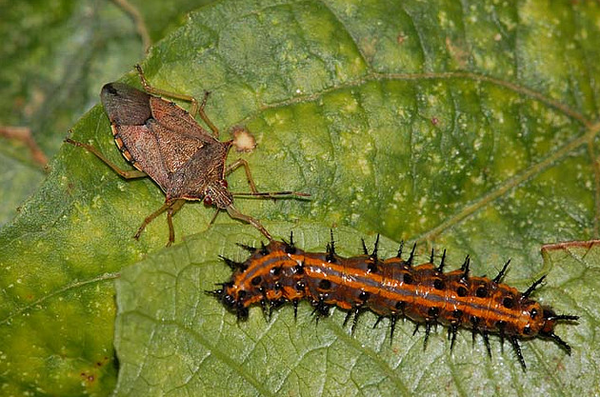
In order not to crawl in the sight of predators, the caterpillar of the tobacco hawk cut their rations, but rearrange the metabolism so that more efficiently use the small portions of food that they are able to get.
The presence of a predator does its potential prey more timid and cautious. The fear of being eaten causes hide and smaller search of food. That is, logically, fear of the predator causes the animal to eat less and therefore slower to grow and develop.
Experiments with caterpillars of the tobacco hawk showed that common sense is not quite right. In the presence of predatory bugs caterpillars do eat less, but they are gaining weight even faster than usual, not frightened. Researchers from Cornell University (USA) planted several different ages of caterpillars in the cell, provide them with food, and then tucked them bugs Podisus maculiventris. These bugs are attacking caterpillars with a sharp proboscis, so that caterpillars survived proboscis have bugs removed.
In the first few days of "dialogue" with the bugs caterpillars cut their rations by as much as 40% compared with those who lived without fear and threats. But the weight of frightening caterpillars were recruited in the same way as the other, and their development and does faster. It was found that this kind of stress is somehow rearranges caterpillars metabolism, so they begin to more efficiently use the nitrogen compounds produced with food (in the sense that their excrement is less valuable nitrogen). At the same time they cease to store carbohydrates and lipids are beginning to prefer.
However, as the researchers wrote in the journal PNAS, the optimization of the metabolism of such a gift is not given: nine days Frightening caterpillars begin to eat even more than others. The effectiveness of assimilation of nutrients they fall below the norm: they begin to digest food by 35% worse than normal. Obviously, a mechanism to ensure a more efficient digestion, eventually turned off, and insects to maintain the growth rate, it is necessary to resort to more traditional way - just eat more.
All of this is strongly reminiscent of a recent report that frightened grasshoppers predators affect the soil microflora. And here before us is another example of layering ecological relationships: a predator affects the ecosystem, not only the fact that jumping around and eats the prey, his power extends, so to speak, more on "psychological" level (though talk about the psychology of grasshoppers and caterpillars followed with caution).
It should, however, be noted that the accelerated development under stress - a phenomenon familiar to researchers. Similarly, the tadpoles behave when in the reservoir level rises predatory threat. Tadpoles are trying as quickly as possible to turn into adult frogs, to be able to get away from a dangerous place. However, this rapid development also has its price: the resulting frogs are smaller than those that developed without force majeure.
The reason for the rapid growth of the sea level is the destruction of glacial saddles
Romans was warmer than we thought

